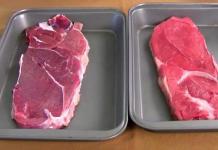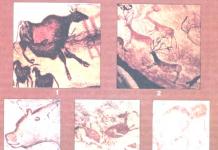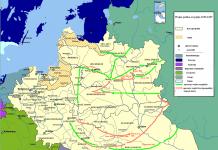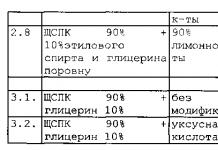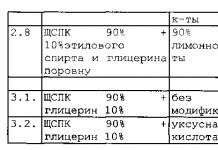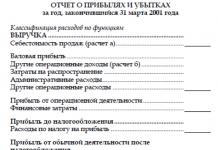It just so happened that from the very beginning, nuclear energy was created in deep secrecy and secrecy, including from its own people. She remained in this state for many years. As for educating the population on the basics of nuclear ecology and health protection from ionizing radiation, nuclear scientists practically did not deal with these issues. After all, the less people understand about these matters, the easier it is to “turn them off” or deceive them.
And it is no coincidence that the population of our region, living next to the large atomic research center RIAR, has very little or no understanding of even basic issues related to ionizing radiation.
In order to improve the situation, we decided in this issue of the “Civil Initiative” newsletter to open a nuclear educational program and publish information on at least the basic concepts related to ionizing radiation or, as they say in everyday life, radiation. We had to sort through a lot of relevant material to select the clearest and most simple explanations. In the end, we chose information from the journal "Physics", taking it as a basis and supplementing it from other sources, including from the appendix to the book "Atomic Mythology" by corresponding member of the Russian Academy of Sciences A.V. Yablokov.
Below are answers to questions that appear in letters from our readers and in conversations with residents of the region.
Question. What is a nuclide, radionuclide, isotope?
Answer. Nuclide is called an atomic nucleus, characterized, firstly, by a certain nucleon composition (the number of protons and neutrons) and, secondly, by a certain energy state. Nuclei that have the same nucleonic composition but different energy states are called nuclear isomers. Nuclei that retain their nucleonic composition and energy state for an indefinitely long time are called stable; otherwise we are talking about radioactive nuclides, about radionuclides. There can be two or more nuclear isomers, but only one of them is a stable nuclide.
Radionuclides are often called isotopes. This is not true: the concept isotopes a set of nuclides (both stable and radioactive) is determined that have the same number of protons (and are therefore chemically identical, since these nuclides naturally have the same atomic number and are species of the same element from the periodic table).
Question. What is radioactivity and radiation?
Answer. Radioactivity there is the property of some radionuclides to change over time their nucleonic composition and (or) energy state with the formation of new nuclides (stable or again radioactive) and the emission of IONIZING RADIATION with greater or lesser PENETRATION. These radiations are colloquially called radiation.
Question. What is activity?
Answer. Activity radionuclide source or drug is the number of radioactive transformations in it per unit time. The unit of activity is becquerel(Bq) - activity of a source in which (on average, in a statistical sense) 1 radioactive transformation occurs in 1 second. In practical radiation measurements the following are often used:
kilobecquerel (1 kBq = 10 3 Bq);
megabecquerel (1 MBq = 10 6 Bq);
gigabecquerel (1 GBq = 10 9 Bq).
The non-system unit of activity is still often used - curie(Ki). 1 Ci corresponds to the activity of 1 g of radium-226 in equilibrium with its daughter decay products. The title and semantic content are echoes of the history of nuclear physics, one of the pages of which was the isolation of radium from uranium ore by Marie and Pierre Curie and the study of its properties.
1 Ci = 3.7*10 10 Bq (37 GBq) is a very large (in everyday terms) activity, so in practice they often use:
millicurie (1 mCi = 10 -3 Ci);
microcurie (1 µCi = 10 -6 Ci);
nanocurie (1 nCi = 10 -9 Ci).
Question. Is all radiation ionizing? Which ones are ionizing?
Answer. No, not all, but only those whose energy is capable of causing ionization. For example, electromagnetic radiation in the range of radio waves or visible light is not ionizing radiation. Nuclear radiation, characterized by significant energy of each individual particle, is a different matter.
To consider processes and phenomena related to nuclear technology and energy, as well as radiation safety and radioecology, the following types of nuclear ionizing radiation are essential:
1. Alpha (a) radiation. This is the emission of nuclear particles, each of which consists of 2 protons and 2 neutrons (helium nucleus). It occurs during the decay of atomic nuclei heavier than lead (for example, uranium, thorium, radium, plutonium), as well as in many nuclear reactions. The entry of an alpha emitter into the body can cause biological damage to its cells, because The alpha particle carries a large amount of energy and its ionizing ability is very high.
2. Beta (b) radiation. This is the emission of electrons and positrons moving at very high speeds. It occurs mainly as a result of radioactive decay. The ionizing ability is significantly lower than that of a-radiation. However, beta particles are dangerous when they get on the surface of the body or inside the body.
3. Gamma (g) radiation- the shortest wavelength electromagnetic radiation of high energy and has the greatest penetrating ability. Accordingly, protection from external gamma radiation poses the greatest challenges.
Question. What is the penetrating power of radiation?
Answer. Penetrating power of radiation determines the composition and thickness of the material that effectively absorbs it.
a-radiation is the least penetrating. It is effectively absorbed by a layer of air several centimeters thick, a layer of water about 0.1 mm thick, or, for example, a sheet of paper. b-radiation has a significantly greater penetrating power; to stop it, you need, for example, a layer of aluminum several millimeters thick, and the range of beta particles in biological tissue reaches several centimeters. For g-radiation, all these barriers are almost transparent. To detain it, you need a very thick (tens of centimeters and even meters) layer of a substance with as high an atomic number as possible (for example, lead).
The above is illustrated by the figure. It is easy to see that for a -, b - and g - radiations a simple pattern is observed: the higher the ionizing ability of the radiation, the lower the penetrating ability. This is not at all accidental - when these radiations interact with matter, the main part of the energy is spent on ionization.
Question. What are “exposure dose”, “absorbed dose”, “equivalent dose”, “effective equivalent dose” and what are their units of measurement?
Answer. Exposure dose- a measure of gamma radiation energy determined by the ionization of air. Expressed in Roentgens (R) per unit of time: Roentgen per hour (R/h) or micro-Roentgen per hour (µR/h), etc.
1 Roentgen is equal to 1000 milliRoentgens or 1,000,000 microRoentgens.
Absorbed dose- the amount of energy of any type of ionizing radiation absorbed by a unit mass of the irradiated substance (the main dosimetric quantity). The unit of absorbed dose is 1 Gray (Gy).
Equivalent dose- absorbed dose for different types of radiation (i.e. multiplied by a coefficient for different types of ionizing radiation), causing the same biological effect (the main dosimetric value for assessing damage to human health from chronic exposure to radiation of arbitrary composition). The coefficient for beta, gamma, and x-ray radiation is 1, for alpha radiation it is 20.
According to the SI system, the equivalent dose is measured in Sieverts (abbreviated as Sv). The name of this unit of measurement is given in memory of Sievert, a Swedish radiologist. Previously, we more often used another unit of measurement - the rem (the biological equivalent of an x-ray). 1 Sv is equal to 100 rem.
The derivative of the equivalent dose is effective equivalent dose- Sievert per unit of time. For example, milliSievert/year (abbreviated mSv/year), microSievert/year (abbreviated μSv/year).
Question. In what units is radiation pollution measured?
Answer. Radiation contamination of an area is expressed in Curies per square kilometer or Becquerels per square kilometer. Radioactive contamination of liquids, products and other substances is expressed in Becquerels per liter or kilogram (Bq/l, Bq/kg).
For information: You can obtain more detailed information from our Center for the Promotion of Civic Initiatives, where relevant literature is available on these issues.
| < | Content | > |
Beta radiation is a stream of electrons or positrons emitted by the nuclei of atoms of radioactive substances during radioactive decay. The maximum range in air is 1800 cm, and in living tissues - 2.5 cm. The ionizing ability of p-particles is lower, and the penetrating ability is higher than that of oc-particles, since they have a significantly smaller mass and have the same energy as a-particles have less charge.
Neutron radiation is a stream of neutrons that convert their energy in elastic and non-elastic interactions with atomic nuclei. During inelastic interactions, secondary radiation arises, which can consist of both charged particles and gamma quanta (gamma radiation). In elastic interactions, ordinary ionization of a substance is possible. The penetrating power of neutrons is high.
Water is the most widely used extinguishing agent. It has a significant heat capacity and a very high heat of evaporation (-2.22 kJ/g), due to which it has a strong cooling effect on the fire. The most significant disadvantages of water include its insufficient wetting (and, therefore, penetrating) ability when extinguishing fibrous materials (wood, cotton, etc.) and high mobility, leading to large losses of water and damage to surrounding objects. To overcome these disadvantages, surfactants (wetting agents) and viscosity-increasing substances (sodium carboxymethylcellulose) are added to water.
In explosive areas, radioisotope neutralizers are used, the action of which is based on the ionization of air by the alpha radiation of plutonium-239 and beta radiation of promethium-147. The penetrating ability of alpha particles in the air is several centimeters, so the use of an alpha source is safe for personnel.
Depending on the size of the droplets, the jets are droplet (droplet diameter > 0.4 mm), atomized (droplet diameter 0.2-0.4 mm) and finely atomized (fog-like, droplet diameter
When extinguishing with water jets, their penetrating ability, which is determined by the pressure, is essential.
The pressure of the water jet is determined experimentally by the speed of movement of the drops and the air flow they entrain. Penetration ability decreases with decreasing jet pressure and droplet size. When the droplet diameter is more than 0.8 mm, the penetrating ability does not depend on the jet pressure.
Radioactive isotopes emit various types of radiation invisible to the eye: a-rays (alpha rays), 3-rays (beta rays), rays (gamma rays) and neutrons. They are able to penetrate solid, liquid and gaseous bodies, and for different types of radiation the penetrating ability is not the same: rays have the greatest penetrating ability. In order to detain them, a layer of lead approximately 15 cm thick is needed.)


